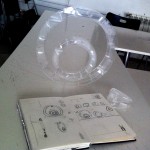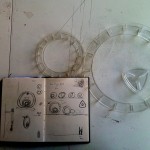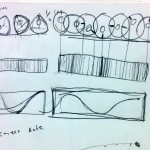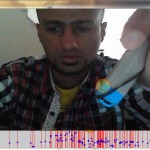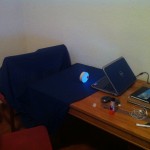When looking for examples of computer vision projects I found out of the importance of the human body and the performance it will have interacting with digital media. While computer vision deals greatly with recognizing ‘objects’, the identification of human body could have very interesting applications. For instance, this installation called ‘body paint’ is designed to work with any number of people and is scalable to cover small or large areas. The interaction is very simple – movement creates paint. Hidden in the simplicity, are many layers of subtle details. Different aspects of the motion – size, speed, acceleration, curvature, distance all have an effect on the outcome – strokes, splashes, drips, spirals – and is left up to the users to play and discover.
“Body Paint” performance at “Clicks or Mortar”, March 2009 from Memo Akten on Vimeo.
On the other hand there is this very simple and fun project called ‘Body Swap’. This installation transforms your body movements into control of another person. Dance around, jump in the air, do anything you like to make them look silly.
Two people stand in front of the screen, are captured by the camera and turned into paper cut-out versions of themselves. The images are then swapped, so that you each take control of the other. The aesthetic is of a low polygon 90′s video game. Music plays and prompts you to act out to the audience and each other.
Body Swap from Chris O'Shea on Vimeo.





